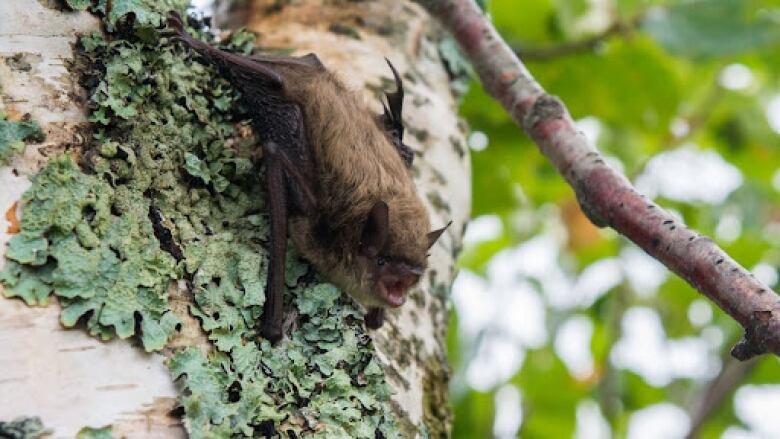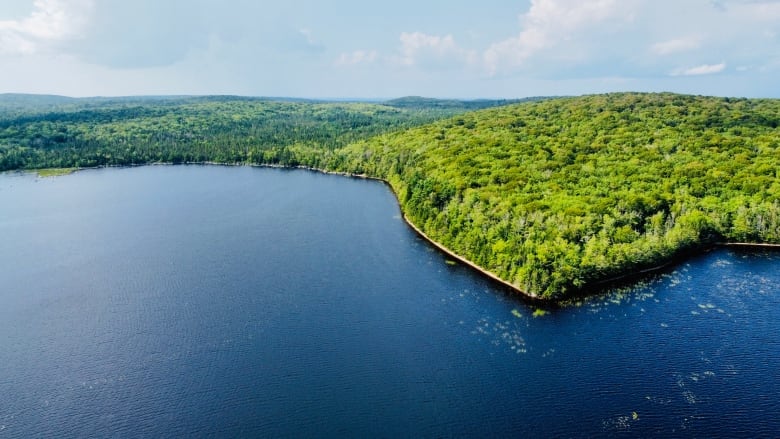Bats discovered in proposed Archibald Lake wilderness area
Conservationists are calling for protection of the habitat

Bats are now one of the many rare species observed living in Nova Scotia'sArchibald Lake wilderness area.
The discovery was made by retired biologist Edwin DeMont.
He picked up on bats using a device that can record the ultrasonic frequencies bats use to echolocate.
DeMont tweeted about the discovery on Aug. 21, saying he was working to identify which species of bat he had found.
Update on #AudioMoth project - #bats found in the #ArchibaldLake #Wilderness Area. #Species ID in progress.@AudioMoth @OpenAcoustics #Biodiversity #Bioacoustics #Soundscape #NovaScotia #Tech4Wildlife #SaveArchibaldLake #Guysborough #Chiroptera #Bat
#Video of #fieldwork pic.twitter.com/fE8tugvmY8
—@ArchibaldLakeHe thinks it's a little brown bat, one of the three species of bats considered endangered in Nova Scotia.
"What we're hoping for is that the provincial government is going to designate and protect the Archibald Lake wilderness area and we're trying to keep increasing the numbers of rare species we identify there," DeMont said.
Notimeline for decision on Archibald Lake
DeMont works with the St. Mary's River Association, a conservation group based in Sherbrooke, N.S., thathasbeen trying to get Archibald Lake protected since 2019.
The association is worried the Cochrane Hill gold project, a proposal to build an open-pit gold mine in the area, could have negative impacts on local ecosystems.
The formerLiberal government considered Archibald Lake for protection in 2020. Current environment minister Tim Halman told CBC in July that no decision had been made regarding the designation of the area.

Scott Beaver, president of the river association, said in a statement that his team hasbeen meeting with local politicians to raise awareness about the importance of the wilderness area.
He said the organization hasn't had as much luck meeting with senior officials from the province.
Bat conservation in Atlantic Canada
Bat populations in Nova Scotia declined severely in the early 2010s with the onset of white-nose syndrome. The fungal disease had taken out about 95 per centof the province's bat population by 2013, according to the Mersey Tobeatic Research Institute.
The institute is a major player in bat conservation in Nova Scotia. It works with the Nova Scotia Department of Natural Resources and Renewables and the North American Bat Monitoring Program to research and monitor bat populations.
Lori Phinney, the leader of the institute's bat project, said in a statement that bats are critical to Canadian ecosystems and agriculture because of pest control.
"All the bats native to Canada and Nova Scotia are insect eaters and one little brown bat can eat hundreds to thousands of insects in one night," Phinney said. "Their worldwide value as a natural form of pest control for agriculture and forestry is estimated in the billions of dollars."

Most bats can only have one baby per year. Thatis partly why bat populations are still struggling to recover.
Phinney saidthere are about 15 known sites of little brown bat colonies in southwest Nova Scotia. While this is nowhere near the amount a healthy population should have, the number of bats in these colonies hasbeen increasing in recent years.
"We hope this is a promising sign there are more bats and also bats who can cope with the impacts of the disease white-nose syndrome," Phinney said.
Phinney encourages Nova Scotians to keep an eye out for bats and report any sightings. Reports can be made online at www.batconservation.ca.












_(720p).jpg)


 OFFICIAL HD MUSIC VIDEO.jpg)
.jpg)



























































































